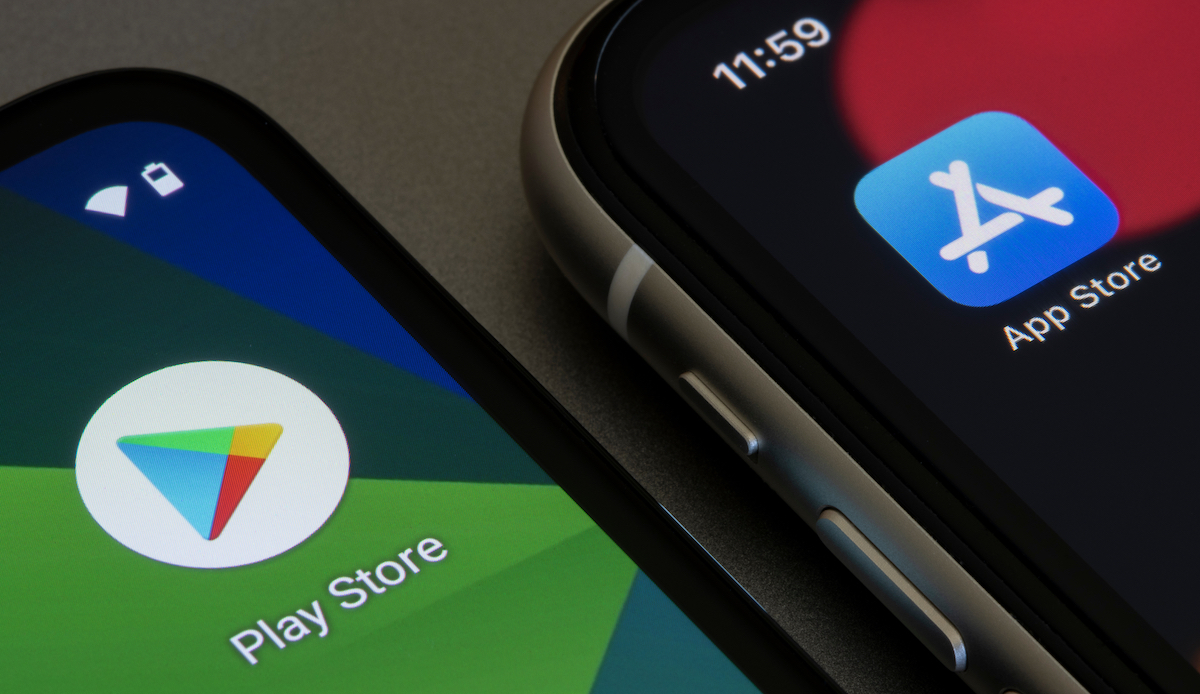App Store vs Google Play: the battle of the app stores
In most cases, mobile apps can be downloaded from app stores. There are more than 300 such stores around the world, the best known being the Apple App Store for iOS and the Google Play Store, the specialist app store for Android. Let's see how they differ from each other.
Downloadable apps for smartphones and tablets are now an integral part of our lives. We use them to stay healthy when we travel, we ask for their help at work, and exploit their services for leisure activities. Apps are available in multiple stores for either paid or free download. The Apple App Store and the Google Play Store are the two best-known stores specializing in particular technologies: iOS and Android.
App Store vs Google Play: comparison
The two app stores are similar in many ways, but there are some differences. We present them, as collected by Cybercrew!
Entry threshold
When a company wants to publish its app in a store, it must first go through an approval process. This is how the app store decides if the app is ready to be released to the public. This primary check includes assessing the app's readiness, whether it contains viruses or any elements of non-acceptable content, copyright-infringing images, or music that make it inappropriate for release. If not, it will appear among the other apps, if it is, the system will refuse to publish it.
This is therefore a very important filter, which is less strict for Google Play than for the Apple App Store. While the former takes a few hours for an app to go through the approval process, the latter can take up to two days to get a result. Apple's store is, therefore, is more thorough in this respect, which means that it is much difficult to get in, but users are guaranteed to find a good quality app in the system. In the Google Play Store, you are more likely to run into a buggy or less reliable app.
Revenue
The App Store is ahead of Google Play in terms of revenue generated, given that paid apps are more common and users are willing to spend money to download and install an app. This is precisely the reason why app owners who want to generate revenue are directed to Apple's store first.
Developers can publish apps for money. For both major app stores, 70% of the revenue goes to the developer and 30% to the store.
Number of applications
In 2021, the App Store had 2.2 million apps and Google Play had nearly 3.5 million apps to choose from. The reason behind this difference in volume is the global market share of the mother companies: the Android platform is much more widespread than iOS, and thus generates more downloads on Google's store.
Strengths
Both stores have advantages and disadvantages. The advantage of the Apple App Store is that the apps uploaded are of high quality and the audience is more likely to pay to download them, but the disadvantage is that it reaches a smaller audience than Google Play. Due to the latter, the verification process is longer, and the security level is higher.
Google Play has a lower level of app verification strictness, is easier to publish, and is, therefore, more user-friendly. There are also paid apps in this store, but there are many more free versions to choose from. In general, Google Play's category system is more advanced, with more transparent app types, such as entertainment, travel, lifestyle, etc.
Google Play and the App Store have the same goal: to bring apps to the public. From a business point of view, it is advantageous if the app is created for both iOS and Android and is available in both stores. However, this often involves additional costs. When faced with a choice, it is worth choosing the direction of app development based on the needs and behaviour of the target audience and considering alternative options such as Progressive Web App, or PWA.





